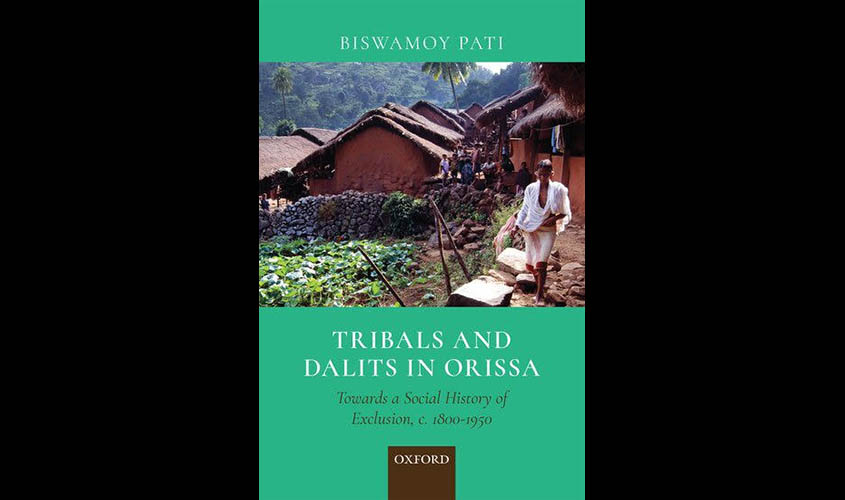Books are banned and burnt in persecuting societies and oppressive regimes. Scholars and writers giving voice to the dispossessed and disenfranchised come within the ambit of what is identified as questioning the power and legitimacy of the state and, thus, misunderstood as seditious. However, this does not deter those firmly committed to the rights of the marginal groups at the wrong side of power relations in a hierarchical social structure under a feudal or capitalistic political order. The Oxford University Press deserves commendation for publishing the richly argued work of historian Biswamoy Pati posthumously, on the forbidding history of horrendous social exclusion of tribals, untouchables, low-caste people and the landless rural poor in the highlands of western Orissa (now Odisha), in districts bordering Jharkhand and Chhattisgarh. These people were sought to be invisibilised in history and marginalised in dominant political discourse. Biswamoy Pati’s work starts circa 1800 and closes in 1950, amidst massive social and political upheavals of decolonisation, Independence and the making of the modern Indian state. The work is of crucial import as the struggles for survival of these people have continued since Independence.
The coastal pilgrim town of Puri with Lord Jagannath emerging as the presiding deity, the princely states of Kalahandi and Mayurbhanj are among the major sites in Orissa—comprising coastal eastern district plains and the mineral rich western hilly region—which witnessed horrid “rhythms of change and devastation” caused by colonial capitalism. Traditional arrangements, even if of pre-colonial feudal kind, of control and use of land were disrupted by frequent measurement and accordingly increased revenue demands, which were referred to as settlements. New forest laws almost entirely barred tribal population from using its resources on which they had hitherto depended for subsistence. Denuding forests in the name of infrastructural development and industry was a common practice, leading to large-scale displacement with no arrangements for proper rehabilitation. The social and religious transformations witnessed an aggressive process of Brahmanisation and Oriyaisation in which tribals were placed at the lower order of caste and class hierarchy. In other words, the traditions, customs, rituals, and, indeed, the very livelihood of people identified as Adivasis, as also Dalits, were shattered.
These much-exploited people hit back against feudal chiefs of princely states, who had themselves possibly undergone a process of Kshatriyaisation from their tribal origins before claiming Rajput status. They relentlessly defied the fast-expanding tentacles of British exploitative colonial regime. The emerging Oriya middle class, fashioning itself into Sanskritik Brahmanical Hinduism combined with a deceptively hypocritical Western colonial modernity, which the representatives of the competitive Lutheran and Roman Catholic missions could not handle properly, was also questioned. The whole of the nineteenth and first half of the twentieth centuries would, thus, see tribal population continuously involved in resistance of everyday kind (using abusive or dismissive epithets, often in Hindi, to call out the oppressors), violent protest involving murder and bloodbath (sometimes making a ghastly spectacle of brutal lynching of a zamindar’s agent) and mocking dominant rituals of power and legitimacy (such as giving up on Hindu appropriation of tribal God, Jagannath, and launching a new Mahima Dharma with its strong message of egalitarianism and humanism, moving away from scripturally sanctified social-stratification).
The political regime retaliated with all its might, with anecdotal accounts reporting massive crackdowns in which large numbers of tribal rebels were killed; communities which were on the forefront of resistance movements were targeted as criminal tribes and mercilessly brutalised. The state also made a mess of traditional notions of illness and methods of healing by introducing new western medical practices, betraying a complete moral and intellectual bankruptcy in dealing with severely affecting diseases such as cholera, leprosy and mental disorders. Mentally ill were condemned as criminal lunatics, and poor lepers were quarantined. Emerging urban spaces were segregated between the posh enclaves for the rich and resourceful and poor settlements with little amenities for the downtrodden.
The pauperisation of the tribals and their condemnation as lazy drunkards, coupled with the humiliation of dry fish consuming untouchables and beef-eating impoverished Muslims as carriers of leprosy virus, would mean large sections of the people were attacked for the condition they were forced to live in. The traditional political organisations such the Kisan Sabha and Praja Mandals were in no position to ensure justice for the oppressed. Later interventions by leaders of the national movement and the Communists could not resolve the difficulties as they struggled with their contradictions, competitions and attempts to run down each other. This is the murky legacy that the modern Indian state has struggled to handle for over 70 years.
Based on Biswamoy Pati, Tribals and Dalits in Orissa: Towards a Social History of Exclusion, c. 1800-1950, Oxford University Press, 2019.

